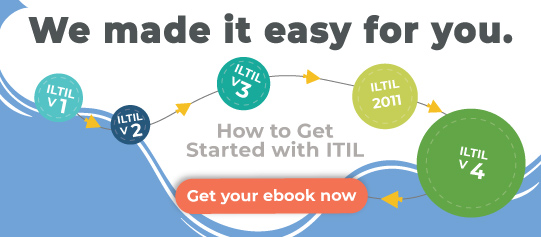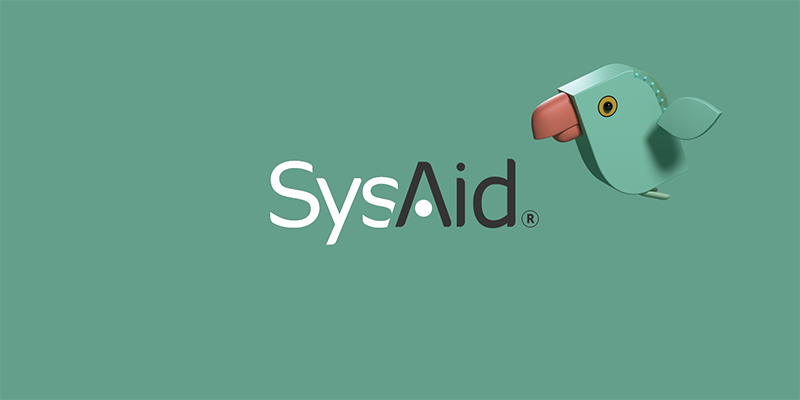The Difference between “Outcomes” and “Outputs” Makes a Difference!

In another SysAid blog, I used an analogy of a pizza delivery to illustrate the point about the difference between outcomes and outputs.
The outputs of a pizza delivery service are the pizza itself and the delivery of the pizza. Regardless of what pizza delivery store you may use, the outputs are the same.
Why do you choose one pizza delivery service over another? I would argue that the outcomes you get from the chosen pizza delivery meet or exceed your expectations.
Think about it. It’s one thing to get a pizza delivered. It’s completely something else to have the pizza that is delivered be the actual pizza you ordered. And that the pizza is hot, tasty, and didn’t make you ill from eating it. And the reason why you order pizza from your favorite place rather than some other place is that you receive consistently good results – or outcomes – when you order from your favorite place.

Outputs vs. Outcomes
Let’s move from the pizza delivery analogy to the perspective of IT working within a business. What are some examples of outputs from the IT organization?
- A delivered report
- A closed ticket
- A completed transaction
What are some outcomes the business wants to achieve from using services provided by IT?
- Enhanced or protected brand reputation
- Products shipped to the right customer at the right price
- Retained or new customers
- Increased revenues
- Increased market share
- Customers feeling valued by the business
- The business feeling that the results of doing business is worth the cost and effort
From a business perspective, the “output” represents the minimum requirement from IT. Outputs are quantitative and far easier to measure than “outcomes.” But outputs do not fully represent or tell the complete IT story.
It’s the outcomes that businesses want and need. Outcomes are both quantitative and qualitative. Not only do outcomes reflect results, they also reflect the experience and perception between the IT organization and those it serves.
That feeling and perception is what can make outcomes so difficult to measure. But it is exactly why outcomes make such a difference in the relationship between an IT organization and the business it serves.
Technology Is the Conduit Between Businesses and Customers
Technology has become the foundation for doing business, and no longer just a back-office function done within a business. It is critical for both the IT organization and the business it serves to recognize this significant shift in the use of technology.
Technology has long been important for businesses in its interactions with its customers. For example, businesses invested in technology as they established call centers and back-office systems like CRM and ERP systems for managing customer interactions.
But now, technology has moved from just being important to being critical for businesses in the modern economy. Now customers expect to interact with businesses at any time from any place. This means that technology has become customer-facing (in the truest sense of the term) for businesses. Whether it’s the company website, mobile app, or a social media presence, technology is now the critical conduit for connecting businesses with their customers.
This means that it’s no longer just about the output. It’s now also about the outcome. What is the customer experience during interactions with technology provided by a business? Is the user experience, when interacting with that technology, frictionless and intuitive? And just as important, are employees having positive experiences and able to get their work done at the right quality and quantity using technology?
Why Is This So Important?
The conversation between the IT organization and the business it serves must shift from one of “outputs” to “outcomes.” Many IT organizations only report on the activities that they’ve accomplished (for example, number of calls to the service desk, number of incident records, number of RfCs, etc.) and not on the outcomes achieved by the business in its use of technology.
Why is this so important?
First, it forces IT to think in terms of business value, not activities. If all a business needs is for tickets to be closed, a business can outsource those activities.
Secondly, it makes IT talk in terms that make sense to business colleagues. “98% availability” sounds nice, but it is meaningless to business colleagues. “Providing sufficient system availability to produce more than 10,000 widgets” provides the right context for business colleagues to evaluate the use and impact of technology. It also demonstrates that IT does understand how technology is used within the business.
Perhaps most importantly, it moves the perception of IT from being an “order taker” within the business to a “value enabler.” It’s a far different perception when IT looks and acts like a drive-through restaurant than when IT looks and acts like it is a business enabler.
Step Up Your Game
If your IT organization hasn’t shifted from an “output” mindset to an “outcome” mindset, it’s time to step up your game – now.
- Define Services – I’m sure I sound like a broken record on this one, but if your service catalog reads like the menu from a drive-through restaurant, you’re stuck in “output” mode. Shift to outcome mode by working with business colleagues to define IT services in terms of business value and outcomes.
- Measure and report outcomes – It’s not enough to measure and report on IT activities, like the number of incidents or service desk call volumes. Frankly, your business colleagues don’t care. Instead, collaborate with business colleagues to define how to measure the outcomes from the use of IT services – and then regularly publish those measures. (By the way, I’m not saying to stop measuring IT activities – but I am saying that those measures are for internal IT review.)
- Recognize and reward achievement of outcomes – I once worked with an organization that rewarded associates for closing incident records. This resulted in a behavior of closing low impact, low urgency incidents at a faster rate and volume than higher impact and urgency incidents. Oops. Instead, regularly celebrate the achievements of business outcomes, and recognize the IT contribution to those achievements. And invite your business colleagues to be part of those celebrations. Not only will you be rewarding the right behaviors, you’ll also build good relationships with business colleagues.
Shifting from an “output” to “outcome” mindset may not be easy, but it’s critical to the ongoing relevance of IT within a business. IT organizations that deliver or enable the right business outcomes will have success.

Did you find this interesting?Share it with others:
Did you find this interesting? Share it with others:








